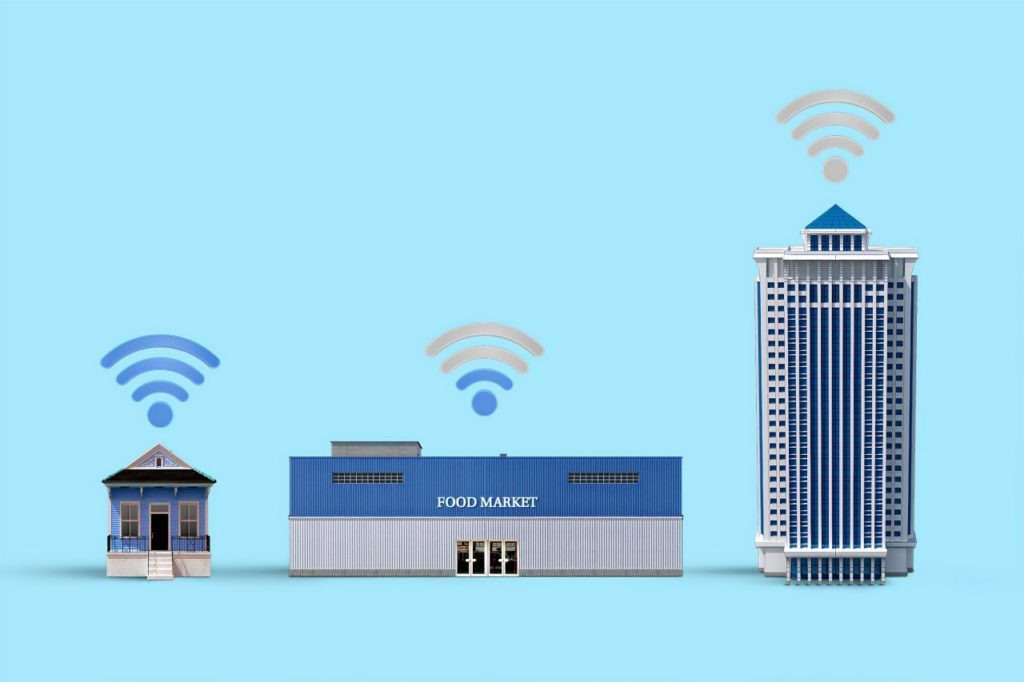Cities are getting smarter, more responsive, and more livable. Learn about smart cities and the various ways they improve the urban quality of life.
Cities are getting smarter. As a result, they are becoming more responsive and more livable – and today’s world is merely at the cusp of what technology could eventually do in the urban environment.
Indeed, across the world we are seeing increased interconnectivity and cities and people who are technology-dependent. In response, a new wave of smart applications are changing how we approach everyday activities. Perhaps in your own home you have personal assistants like Amazon’s Alexa, an intelligent refrigerator or smart home security applications. These types of technology all create opportunities for more efficient living. “Smart Cities” have been proposed as the future of urbanism, which raises the question – how do we connect this new technology for the ultimate efficient society?
What is a Smart City?
According to Wikipedia, a smart city is an urban area that uses different types of electronic Internet of things (IoT) sensors to collect data. It then uses insights gained from that data to manage assets, resources and services efficiently, in return using that data to better improve the operations across the city.
Want to learn more about IoT? Check out our write-up!

Smart Solutions for Cities is fast becoming a reality due to the rapid concentration of populations in cities. About 54% of the world’s population lives in cities, and it is expected that the population will increase 1.5 times by 2050.Yet, with this increase comes an increase in energy consumption, which is troublesome for the environment.Cities’ energy consumption emits 60 to 70 percent of greenhouse gases. Therefore, the efficient energy use in urban areas is an urgent task. In addition, the concentration of the population in urban areas causes problems such as an increase in traffic congestion, air pollution, crime, and environment deterioration.
The effective use of automation, artificial intelligence, cognitive computing, data sharing, analysis and sensors by a public service organization definitely reduces several operating costs where mobilization expenses are abruptly optimized. Smart City components improve the performance of different parts of the operation promoting an efficiency gain in up to 80% for certain procedures with an average of 25% gains within the full physical networking. A faster and more informed decision-making process allows for a quick and confident management procedure.
Smart technologies also create new resources to generate revenue through creative initiatives. IoT solutions effectively allow cooperation with public works and other utilities organizations, generating a new source of revenue. Smart Cities also are able to reduce fraudand promote better usage of the proprieties and urban infrastructure.Existing implementations are reporting that smart city initiatives are saving each global citizen 125 hours a year. A lot of this would come from reductions in traffic and congestion: the average peak-time vehicle speed in cities is currently 4 mph, causing drivers to lose up to 70 hours per year
What Makes a City Smart?
Smart cities make digital technology and data work to make better decisions, thereby improving the quality of life. More comprehensive, real-time data gives agencies the ability to watch events as they occur, understand how demand patterns are changing, and respond with lower-cost and faster solutions.
Living in a smart city raises the question – how can data from areas like air quality meters, public transport and energy production be integrated and efficiently used?
IoT solutions could be part of the answer. According to Forbes, by creating a network of objects capable of smart interactions, a wide range of technological innovations become available that could help improve public transport, give accurate traffic reports or provide real-time energy consumption data.
By making more technology capable of communicating across platforms, IoT generates more data that can help improve aspects of daily life. Cities can identify both challenges and opportunities in real time, allocating resources more accurately to maximize impact by pinpointing issues prior to their emergence.
According to McKinsey, three layers work together to bring a smart city to life. The first layer is the technology base, which includes a crucial mass of sensors and smartphones connected by high-speed communication networks. The second layer is made up of specific applications that translate raw data into alerts, insight and action, which require the right tools provided by technology providers and app developers. The third layer is usage by cities, companies and the public. Many applications are successful only when they are widely adopted and can change behavior by encouraging people to use transit off-hours, change routes, use less energy and water (and to do so at different times of the day), and to reduce strains on the healthcare system through preventative self-care.
Improving the Urban Quality of Life
McKinsey’s Global Institute assessed how smart-city applications could affect various quality-of-life dimensions, including safety, time and convenience, health, environmental quality, social connectedness and civic participation, jobs, and the cost of living:
1) Improving public safety
Deploying a range of applications to their maximum effect could potentially reduce fatalities like homicide, fires, and road traffic by 8 to 10 percent. Further, incidents of assault, burglary, auto theft, and robbery could be lowered by 30 to 40 percent. The benefits of these metrics, of course, is the peace of mind and freedom of movement they would give city residents. When it comes to crime, agencies can use data to deploy scarce resources and personnel more efficiently. For instance, real-time crime mapping utilizes statistical analysis to highlight patterns. Predictive policing can anticipate crime and when incidents do occur, applications such as home security systems, gunshot detection, and smart surveillance can make law-enforcement response happen more rapidly. Yet, data-driven policing must be deployed in a way that avoids criminalizing specific neighborhoods or demographic groups and protects civil liberties. Further, when lives are at stake, smart systems can optimize call centers and field operations while traffic-signal preemption can give emergency vehicles a clear driving path. These types of applications could cut emergency response times by 20 to 35 percent.
2) Making daily commutes faster
One of the aspects critical to improving quality of life is improving the daily commute. By 2025, cites that deploy smart-mobility applications may cut commuting times by 15 to 20 percent on average. This, of course, is related to variables such as the city’s density, commuting patterns, and existing transit infrastructure. Generally, cities with extensive, often-used transit systems benefit from applications that streamline the experience for riders through digital signage or mobile apps that deliver real-time information about delays. Further, installing IoT sensors on existing physical infrastructure can help crews fix problems before they turn into breakdowns and delays. Apps that ease road congestion are most effective in cities where driving and buses are the main form of transportation. Intelligent syncing of traffic signals have the potential to reduce average commutes by more than 5 percent in developing cities where a lot of people travel by bus. Real-time navigation alerts also let drivers know about delays, helping them choose the fastest route while smart-parking apps point them directly to available spots.
Your commute isn’t the only thing that could change in the future of work. Learn more here!

3) Better public health
Applications that help monitor, prevent, and treat chronic conditions like diabetes or cardiovascular disease could make the biggest different in the developed world. Remote-patient-monitoring systems have the potential to reduce the health burden in high-income cities by more than 4 percent. These systems use digital devices to take crucial readings, then transmit them to doctors for assessment in another location. This data can let the patient and doctor know if early intervention is needed, which reduces complications and hospitalizations. Cities can also use data and analytics to identify demographic groups that have elevated risk profiles, thereby targeting interventions more precisely. mHealth interventions can send out lifesaving messages about sanitation, safe sex, vaccinations, and adherence to antiretroviral therapy regimens. In low-income cities with high infant-mortality rates, data-based interventions that are focused on child and maternal health could reduce disability-adjusted life years (DALYs) by more than five percent. If developing cities use infectious-disease surveillance systems to stay ahead of fast-moving epidemics, another five percent reduction is possible. Finally, telemedicine – a rising trend amid COVID-19 – can be a lifesaving measure applied to low-income cites with doctor shortages.
4) Cleaner and more sustainable environments
Environmental pressures multiply as urbanization, industrialization, and consumption grow. Applications like building-automation systems, some mobility apps, and dynamic electricity pricing could combine to cut emissions by 10 to 15 percent. Water-consumption tracking pairs advanced metering with digital feedback messages. It can encourage people to conserve and reduce consumption by 15 percent in cities where residential water usage is high. The biggest source of water waste in the developing world is water leakage from pipes. Using sensors and analytics can cut those losses by up to 25 percent. Applications such as pay-as-you-throw digital tracking can decrease the volume of solid waste per capita by 10 to 20 percent. Overall, cities can reduce unrecycled solid waste by 30 to 130 kilograms annually per person and save 25 to 80 liters of water per person each day and. On the air health front, air-quality sensors can identify sources of pollution and provide the basis for further action. In less than a year, Beijing reduced deadly airborne pollutants by roughly 20 percent by closely tracking the sources of pollution, thus regulating traffic and construction accordingly. Further, sharing real-time air-quality information with the public via smartphone apps lets individuals take protective measures. Depending on current pollution levels, this can reduce negative health effects by 3 to 15 percent.
5) Enhance social connectedness
MGI surveyed urban residents to determine if digital channels for communicating with local officials as well as digital platforms that lead to real-world interactions (like Nextdoor and Meetup) can be impactful. McKinsey’s analysis found that using these types of applications could nearly triple the share of residents who feel connected to local government and double the share who feel connected to the local community. On the other end of the spectrum, establishing channels for two-way communication between local agencies and the public could make city governments more responsive. A lot of city agencies maintain an active presence on social networks, and others have developed their own interactive citizen apps. In addition to spreading information, these channels create platforms for residents to collect data, report concerns, or weigh in on planning issues. For example, Paris has implemented a participatory budget by inviting anyone to post project ideas and then holding online votes to decide which ones require funding.
Smart Cities Are the Future
As urban centers expand and smart technology continues to improve, both will become intertwined. Better decisions as a result of utilizing big data and other smart technology can upgrade cities’ infrastructure. Better decisions could, of course, be very beneficial to the economy.
The potential to reduce costs and improve several aspects of public service systems will only serve to drive the demand for smart cities as they improve our quality of life. By looking toward the future, we will not only improve how we interact with our general environment but also how cities interact with us, ensuring that we receive the best quality options and waste fewer resources.
Partner with Stefanini
Embracing digital means something different to each business, which is why Stefanini is here to help you transform your unique business.
We offer a multitude of services to create the right solution for your business. Our expertise includes Industry 4.0, Cyber Security, Cognitive, Customer Experience (CX), and more. We offer automation and Artificial Intelligence (AI) solutions to bolster productivity as well as User Experience (UX) support to meet customers’ demands.
Want to learn how to implement these solutions at your own enterprise? Give us a call today!





















